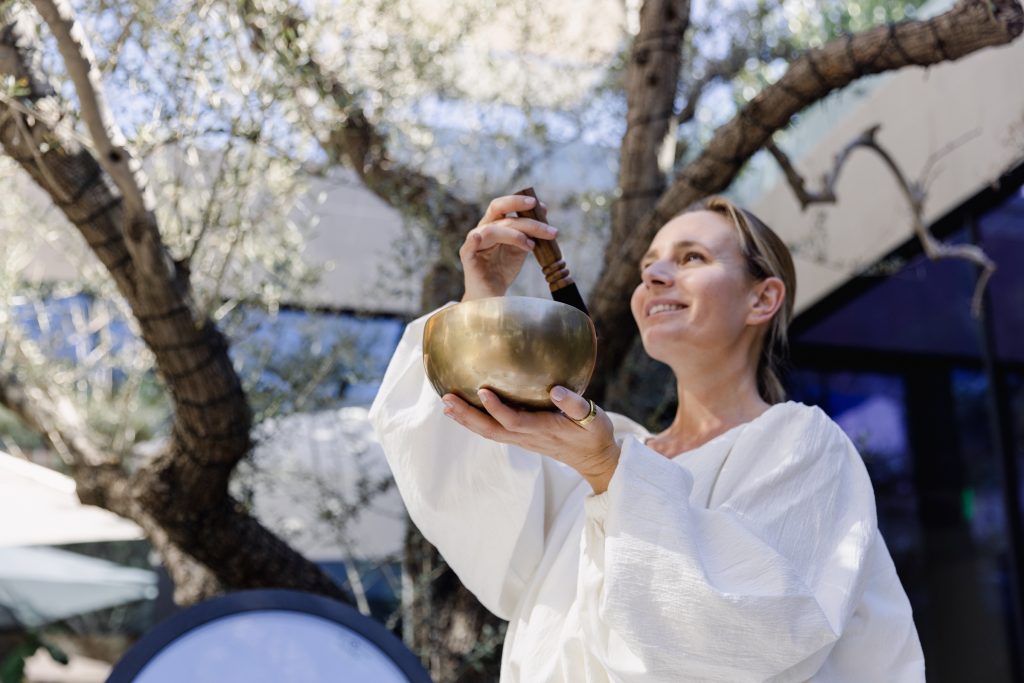Sound baths, renowned for their therapeutic qualities, come in various forms, each offering a unique sonic experience. While the fundamental principle involves immersing individuals in soothing sounds and vibrations, the types of instruments used, the intentions set, and the overall structure can vary. Here are some common variations of sound baths:
- Crystal Singing Bowl Sound Bath: Crystal singing bowls produce pure and resonant tones, believed to have unique healing properties. A crystal singing bowl sound bath typically involves playing these bowls, each tuned to a specific frequency, to promote balance and harmony.
- Tibetan Singing Bowl Sound Bath: Tibetan singing bowls, with their rich and complex sounds, are used in this type of sound bath. Practitioners may play multiple bowls, creating a dynamic and immersive sonic experience.
- Gong Bath: Gong baths feature the powerful and expansive tones of gongs. The deep vibrations of gongs are thought to facilitate deep relaxation and healing on a physical, emotional, and spiritual level.
- Nature Sound Bath: Incorporating natural sounds like flowing water, birdsong, or rustling leaves, nature sound baths connect individuals with the Earth’s calming rhythms. This type of sound bath often takes place outdoors.
- Voice Sound Bath: Sound baths facilitated by vocalists involve chanting, humming, or singing. The human voice is a potent instrument, and practitioners use it to guide participants into a meditative and relaxed state.
- Digital or Recorded Sound Bath: In the digital age, sound baths can be experienced through recorded sessions. These may feature a mix of various instruments or electronic sounds designed for relaxation and meditation.
- Elemental Sound Bath: Elemental sound baths integrate sounds associated with earth, air, fire, and water. This approach aims to balance the energies associated with each element for overall well-being.
